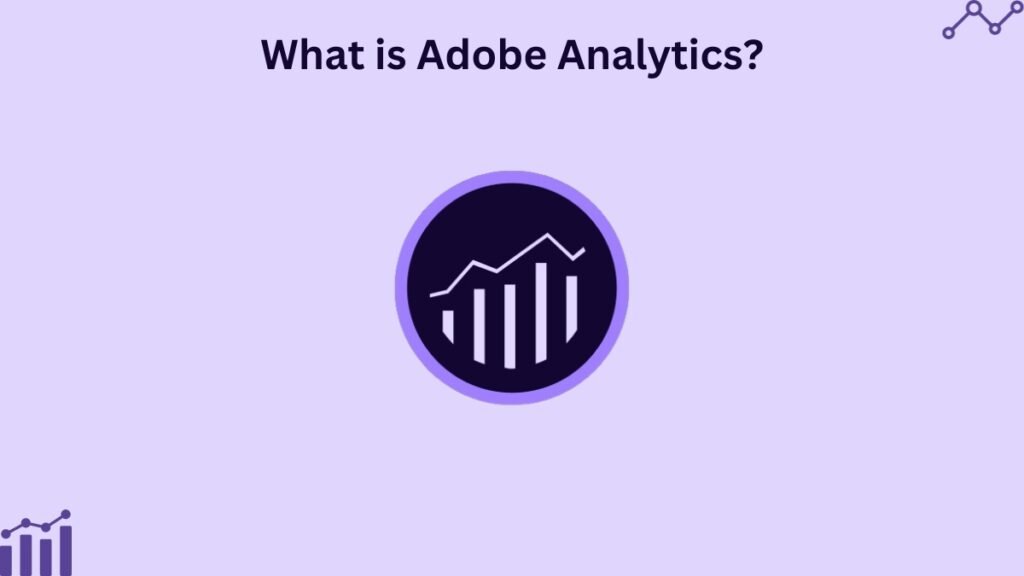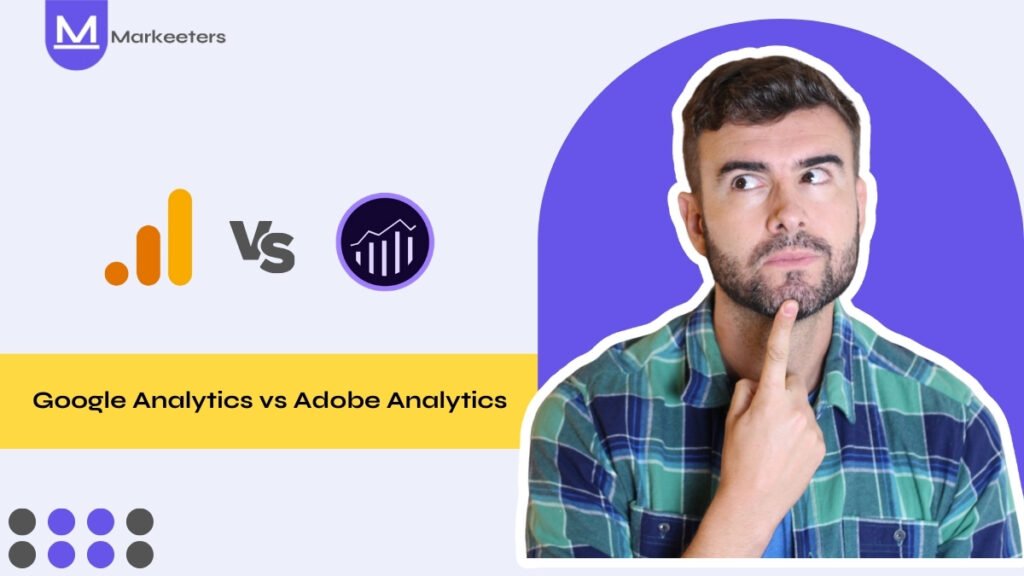Learn the insightful comparison: Google Analytics vs Adobe Analytics. Pick the right tool for your business and start optimizing today!
Data-driven decisions are important to expand your business. This requires knowledge of your website traffic and customer behavior. Web analytics tools such as Google Analytics and Adobe Analytics help optimize your website and improve your marketing efforts. However, how can you decide which one fits the best for your business?
This blog compares Google Analytics and Adobe Analytics on a number of essential elements. Continue reading to find out which platform best suits your resources and company objectives.
What are Web Analytics?
The measurement, gathering, analysis, and reporting of online data with the goal of better understanding and optimizing website performance is known as web analytics. It provides businesses with information on visitor activity, allowing them to make data-driven decisions that optimize the user experience and advance corporate objectives.

Web analytics tools measure several important parameters also known as metrics such as:
- Location and Demographics of Visitors: Businesses get to know information about the location, interests, gender, and age of website users. It helps customize communications and personalized experiences.
- Sources of Traffic and Acquisition Channels: The sources of visitors, include email marketing, social media, organic search, and referrals. It aids in identifying the media that works best to increase traffic.
- Sales Funnels and Goals: Web analytics also showcase the steps a user takes to buy your products or services and the conversion rates at each stage. Funnels indicate gaps so that websites can optimize the user experience.
- Page Views, Visits, and Bounce Rates: The amount of content viewed on the website. Bounce rates assess abandonment rates and single-page views as a measure of engagement and relevancy.
- Engagement Metrics: Time spent on your page, scroll depth, and clicks reveal user interest levels and potential areas for development.
What are Google Analytics?

Google Analytics (GA) is an analytics tool that helps businesses monitor and evaluate user behavior and engagement on their websites and mobile apps. Google has the largest market share when it comes to web analytics. You can track and improve the success of your marketing by evaluating the efficiency of customer acquisition efforts, customer behavior, engagement, and conversion metrics by reporting and analyzing audience and trend data.
Google Analytics is a component of a larger ecosystem of the Google Marketing Platform, which contains additional products such as:
- Google Ads
- Google Tag Manager
- Google Search Console
If you are planning to utilize GA as your analytics platform, you can consider two possible packages:
- Google Analytics (GA4): This is a free edition. Earlier, GA users were using the Universal Analytics (UA) version; however, in May 2023, Google moved users to the newer GA4 version due to worries about solutions’ illegality and non-compliance with GDPR. The transfer was not easy for GA’s current users; among the problems they faced was the inability to transfer their data. However, G4 is actually a reasonably strong tool on its own, even if it is free to use.
- Google Analytics 360 (GA 360): This is Google’s premium enterprise edition, which is not free. It costs money and offers more features and usage. It is possible that GA 360 would be a better fit for comparison if you were comparing it to Adobe Analytics.
Learn more:
- Google Meet vs Zoom vs Microsoft Teams: Comparing Top Video Conferencing Tools (2024)
- Digital Creators vs Influencers: What is the Difference?
What is Adobe Analytics?

Adobe Analytics is part of the Adobe Experience Cloud package. It is a strong online and marketing analytics platform. It gives you the ability to combine and analyze data from any stage of the digital experience.
You can get real-time insights based on a detailed understanding of your target customer by collecting data in one place. This gives you an overview of website traffic, customer journeys, and the efficiency of your paid and other conversion channels. It offers strong connectivity with a variety of other Adobe Experience Cloud technologies, ranging from e-commerce features to a sizeable and complex list of CDP features.
According to Forrester, Adobe Analytics achieves a 224% ROI.
Google Analytics vs Adobe Analytics: A Quick Review
| Aspect | Google Analytics | Adobe Analytics |
|---|---|---|
| Company | Developed by Google | Developed by Adobe Systems |
| Deployment | Cloud-based (hosted by Google) | Cloud-based (hosted by Adobe) |
| Data Collection | Uses JavaScript code for tracking | Uses JavaScript code for tracking |
| Integration | Native integration with other Google products | Part of the Adobe Marketing Cloud suite |
| Customization | Limited customization options | Highly customizable and flexible |
| Cost | Free version available, premium for additional features | Pricing typically higher than Google Analytics |
| User Interface | Intuitive and user-friendly | Robust, may have steeper learning curve |
| Data Limits | Limited data processing capabilities in the free version | Higher data processing capabilities |
| Real-time Reporting | Real-time reporting available | Real-time reporting available |
| Custom Variables | Limited custom variables | Advanced custom variables and classifications |
| E-commerce Tracking | Standard e-commerce tracking features | Robust e-commerce tracking capabilities |
| Audience Segmentation | Basic audience segmentation | Advanced audience segmentation capabilities |
| Mobile App Analytics | Supports mobile app analytics | Support mobile app analytics |
| API Access | Limited API access in free version | Extensive API access available |
| Customer Support | Community forums, online resources | Dedicated customer support with service level agreements |
| Data Ownership | Google owns and controls the data | Users have more control over their data with Adobe |
| Learning Resources | Abundant online resources and tutorials | Detailed training programs and documentation |

Google Analytics vs Adobe Analytics: A Detailed Comparison

Google Analytics vs Adobe Analytics: Reporting
| Google Analytics |
|---|
| Specified reporting models based on the customer life cycle are available in Google Analytics. In addition to the demographic and technology usage information you already understand from UA, GA4 provides activity breakdowns according to the customer life cycle stages. These phases include Acquisition, Engagement, Monetization, and Retention. |
| Adobe Analytics |
|---|
| In 2015, Adobe Analytics combined its reporting and analytics functions into the Analysis Workspace. It was a smart move. Adobe’s features are flexible. The goal is to create real-time insights that optimize the customer experience. You can export data as needed using a variety of reporting templates. |
Google Analytics vs Adobe Analytics: Data Collection
| Google Analytics |
|---|
| Google Analytics records events like clicks, scrolling, and stay times. It is user-specific. The goal is to assist companies in meeting the changing demands of their customers, particularly those related to campaign optimization and privacy. Certain reports and studies have data limits, and it is also unclear how many users are required at a minimum. |
| Adobe Analytics |
|---|
| The data format of Adobe Analytics follows an order of Visitor, Visit, and Hits, just like GA4. But Adobe has an advantage over Google because of the way this data is gathered through both online and physical channels. In order to generate rich audience groups, Adobe’s raw data incorporates a variety of signals, including participation metrics (similar to Google’s events). |
Google Analytics vs Adobe Analytics: Price
| Google Analytics |
|---|
| Google will not charge for the baseline features in GA4. It is free. To scale up data gathering, you can request enterprise-level technical assistance; you will need to move to GA4 360. GA4 360 is available to businesses with at least one million monthly visits. According to Google, GA4 360 starts at USD 50,000 per year and includes 25 million events every month in addition to extras. |
| Adobe Analytics |
|---|
| The cost of Adobe Analytics matches its enterprise-level features. Select, Prime, and Ultimate are the available subscription levels; there is no free basic version. Whichever package you choose for your subscription, Adobe Analytics costs beyond the 30-day trial period will range from USD 30,000 to USD 150,000. |
Google Analytics vs Adobe Analytics: Data Update Time
| Google Analytics |
|---|
| According to Google’s SLA, processing times for data and user lifetime stats might go up to 24 hours. This delay might be a little inconvenient or result in restless nights, depending on the use case. |
| Adobe Analytics |
|---|
| With Adobe, report completion takes only two hours and has a quicker turnaround time. Every hour, each data collection server uploads batches of raw data; hence, if the participation metric registers immediately before an upload, the upload speed might be even quicker. |
Conclusion
Businesses with different degrees of analytics competence can benefit from using Google Analytics or Adobe Analytics. Adobe Analytics gives businesses the ability to customize data, whereas Google Analytics is intended for self-service access. Google Analytics is helpful for small businesses because it is a free yet effective tool to get web analytics information and make informed marketing decisions. Large companies use Adobe Analytics because it meets their demands for detailed analysis, long-term data storage, and forecasting for tactical decision-making.
Finally, Google Analytics is an ideal platform for businesses beginning their analytics journey. It has a user-friendly design. Moving to enterprise-class Adobe Analytics is beneficial for maintaining a competitive edge with actionable multi-channel insights as marketing data and analytical demands evolve over time.
FAQs
Which is better Google Analytics or Adobe Analytics?
The primary difference between Google Analytics and Adobe Analytics is that the former is better suited for online reporting, while the latter is true web analytics solution.
What is the future of Adobe Analytics?
Adobe plans to retire Reports and Analytics, along with all related reports and functionality, on January 17, 2024. Adobe’s technological requirements are no longer met by the reports, visualizations, and underlying technologies that drive Reports & Analytics.





